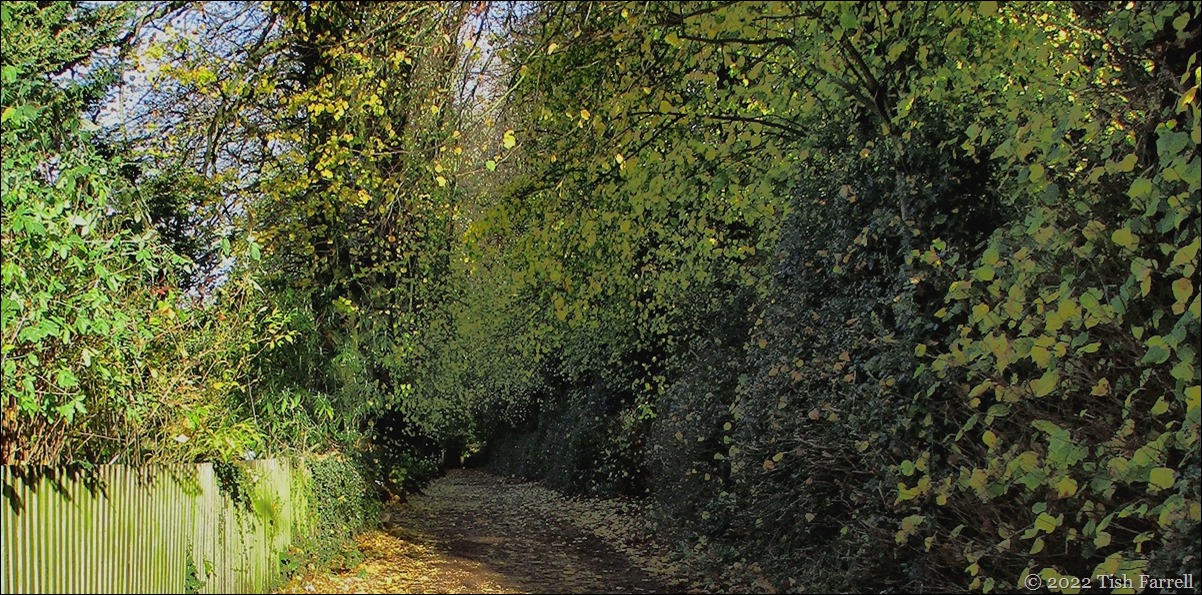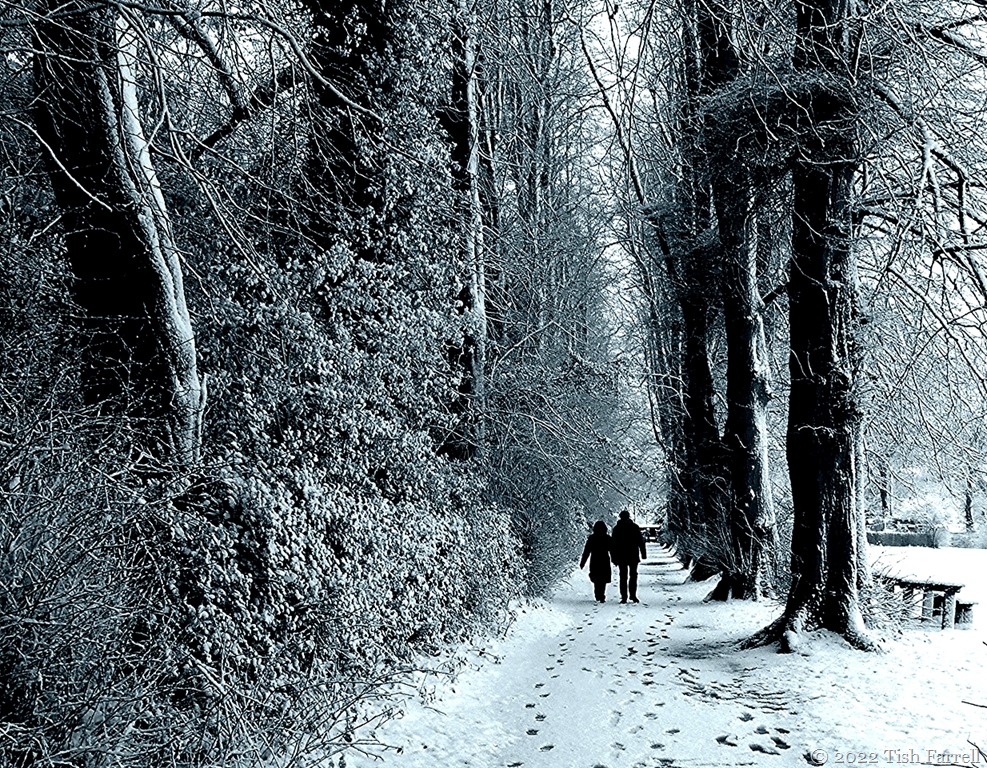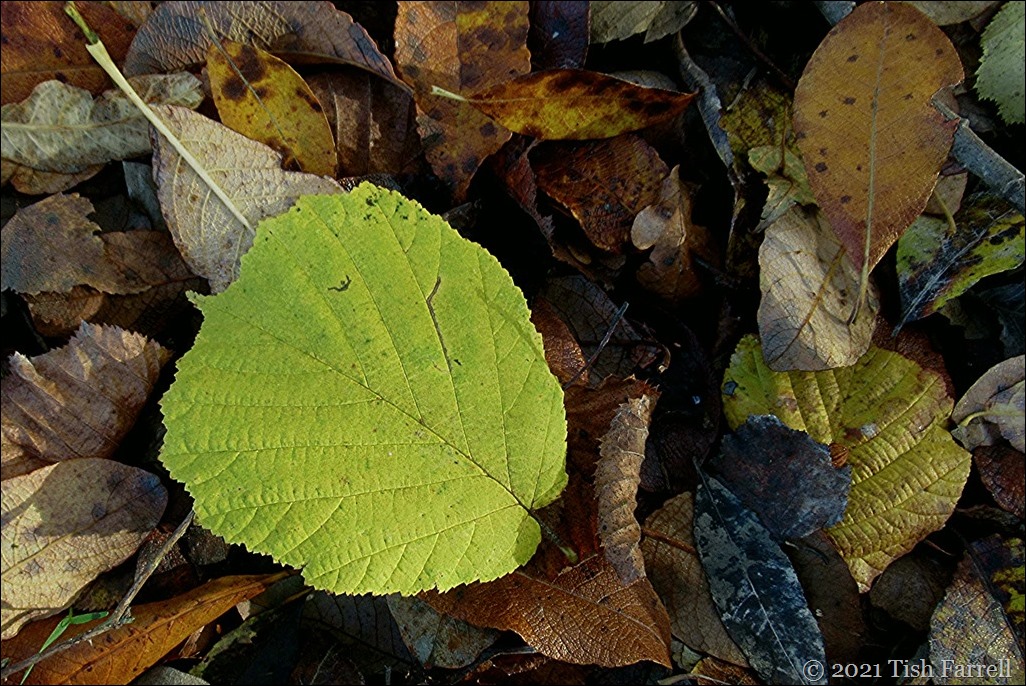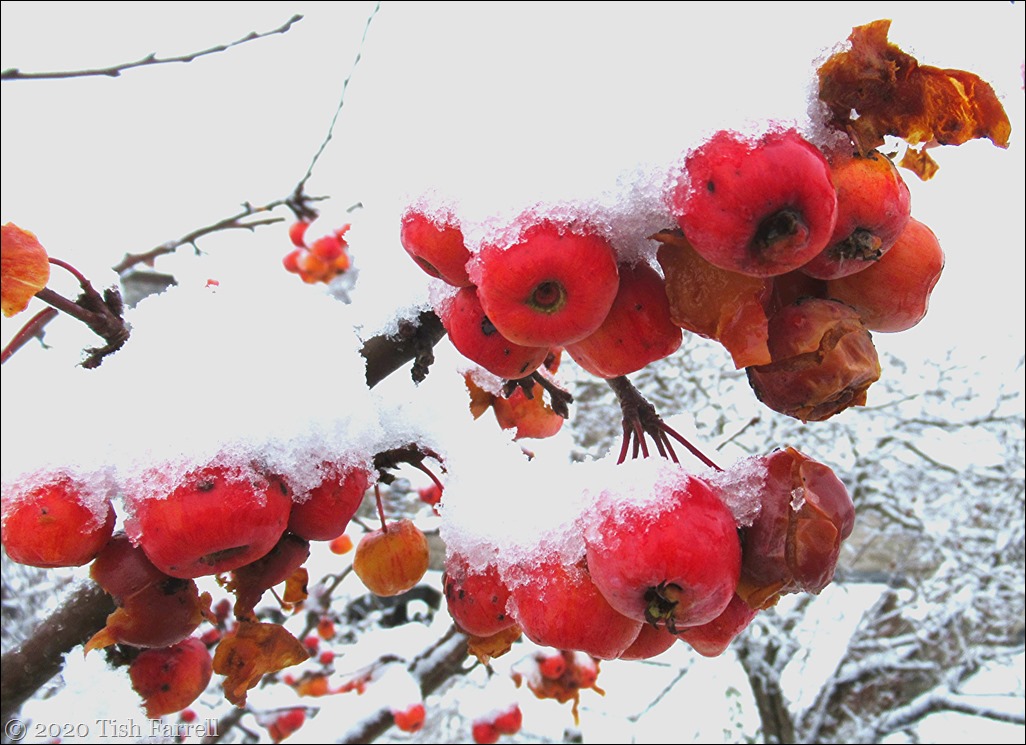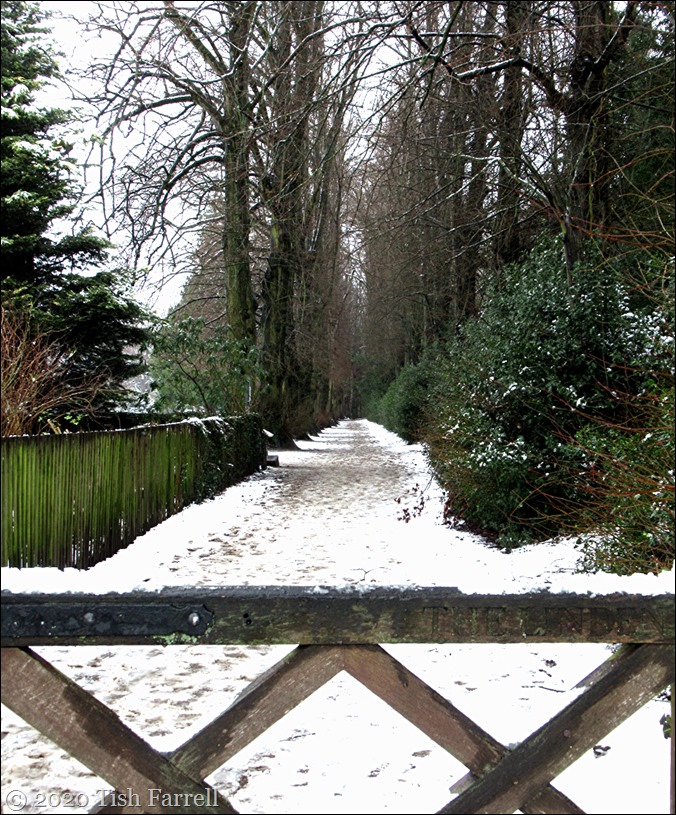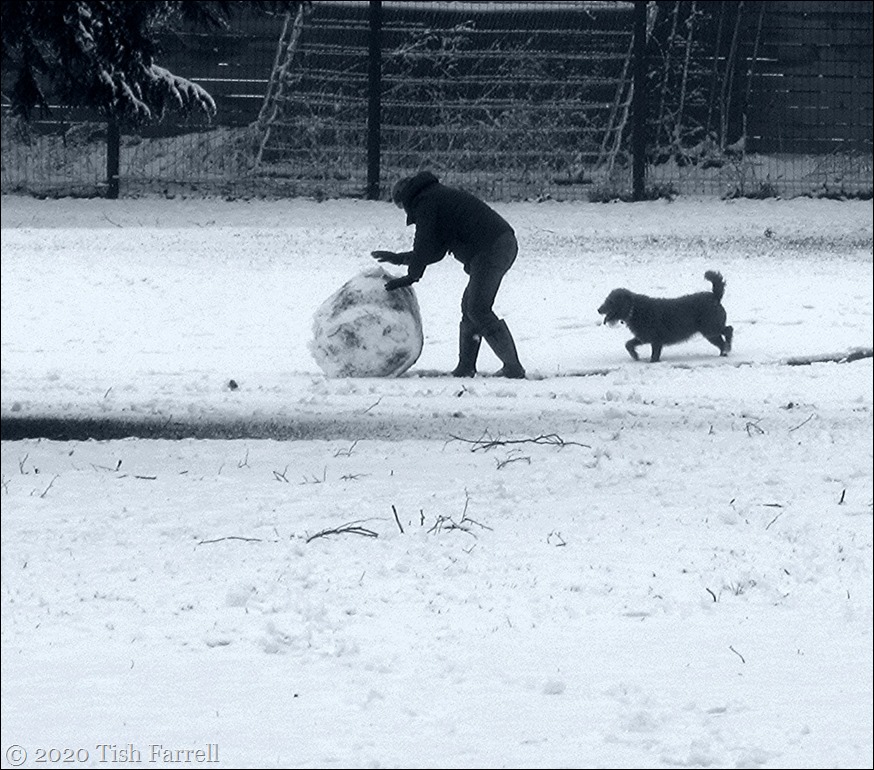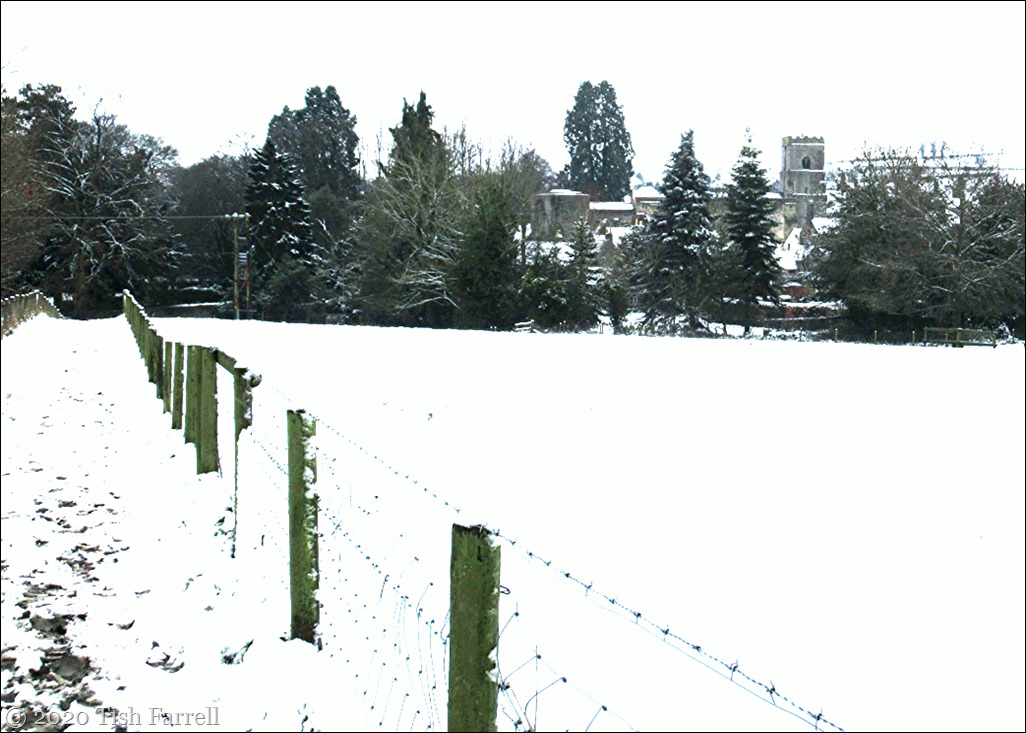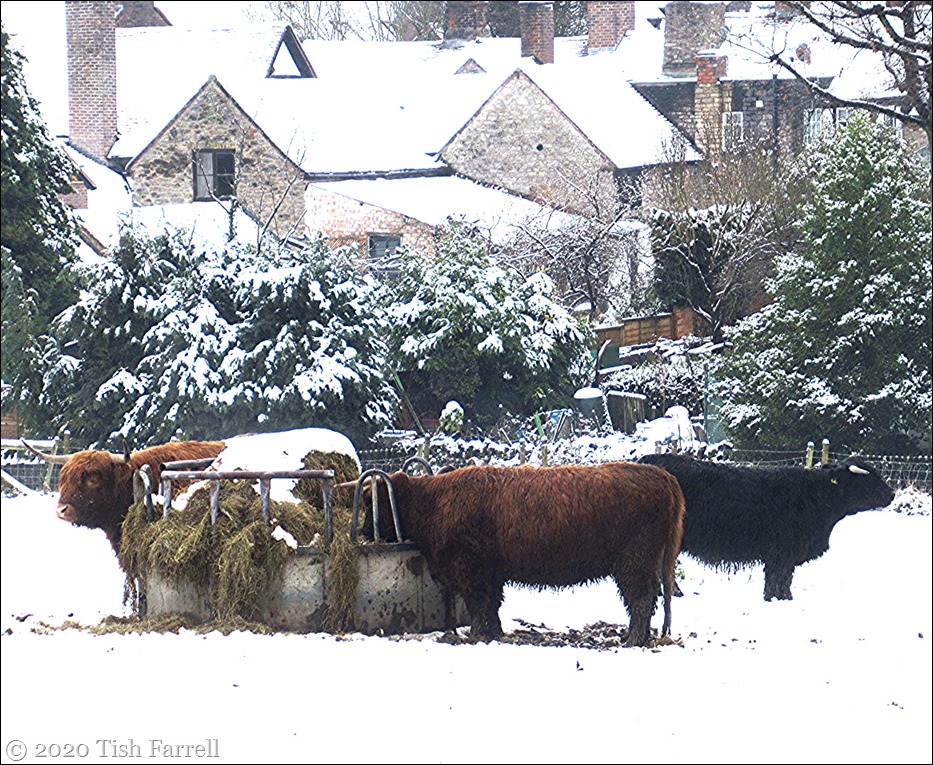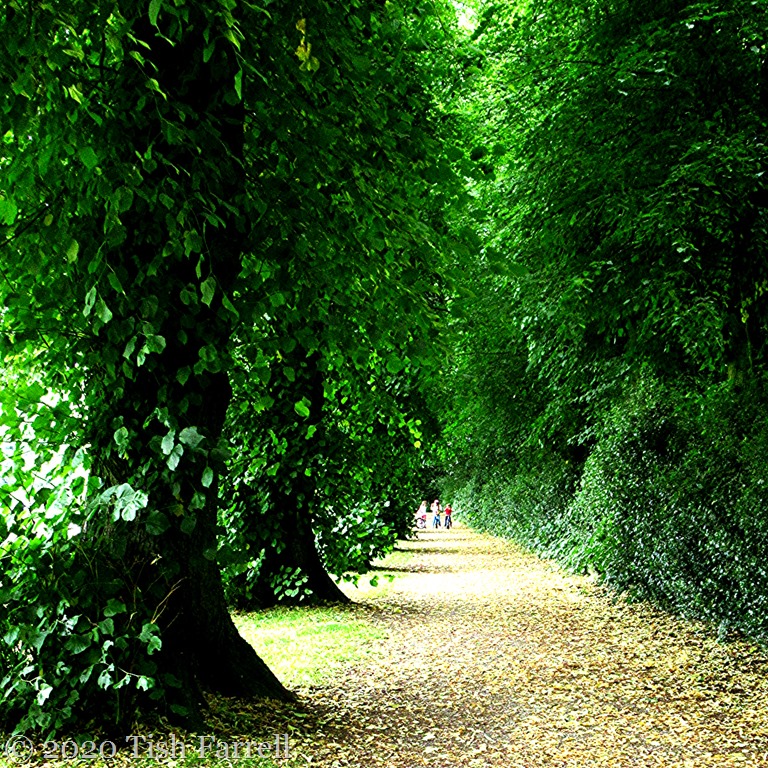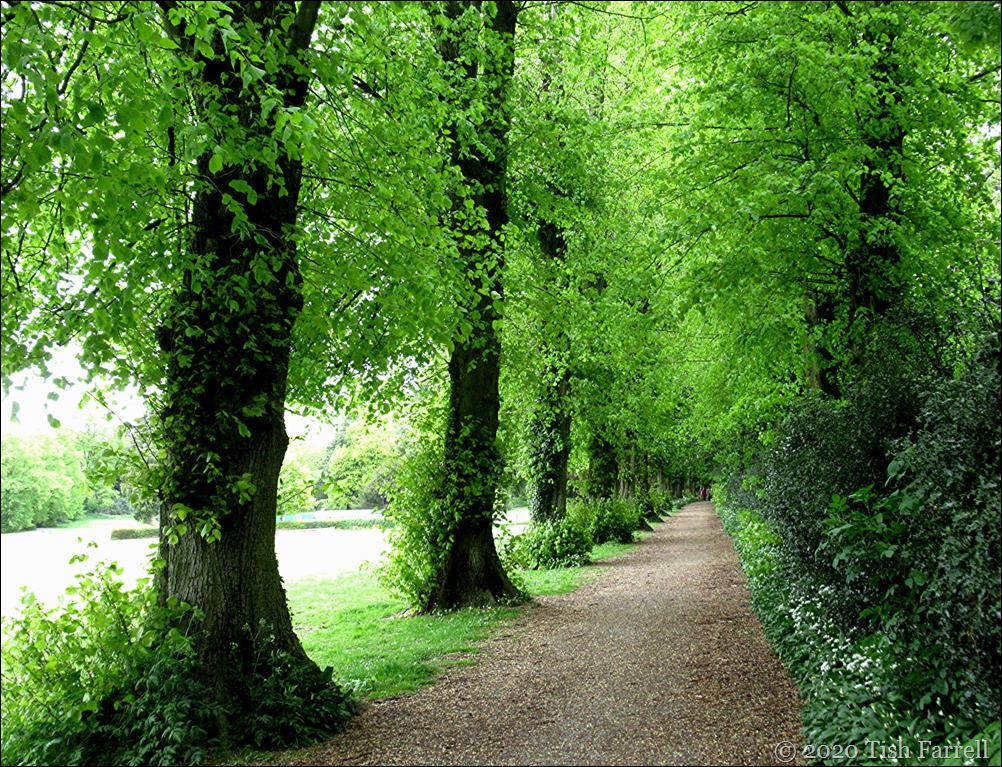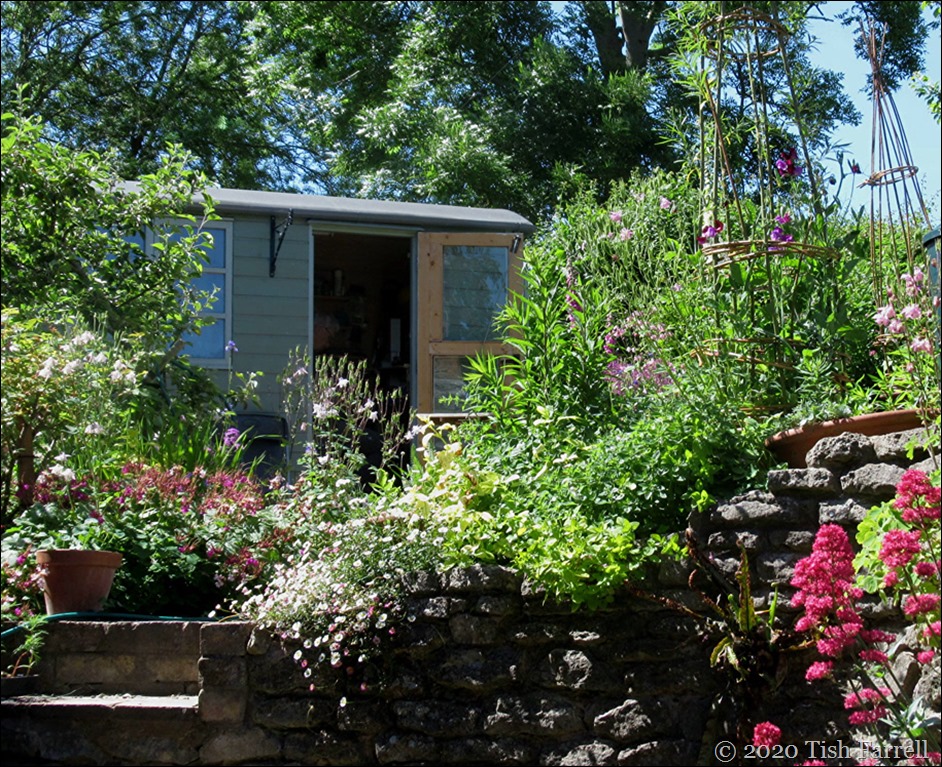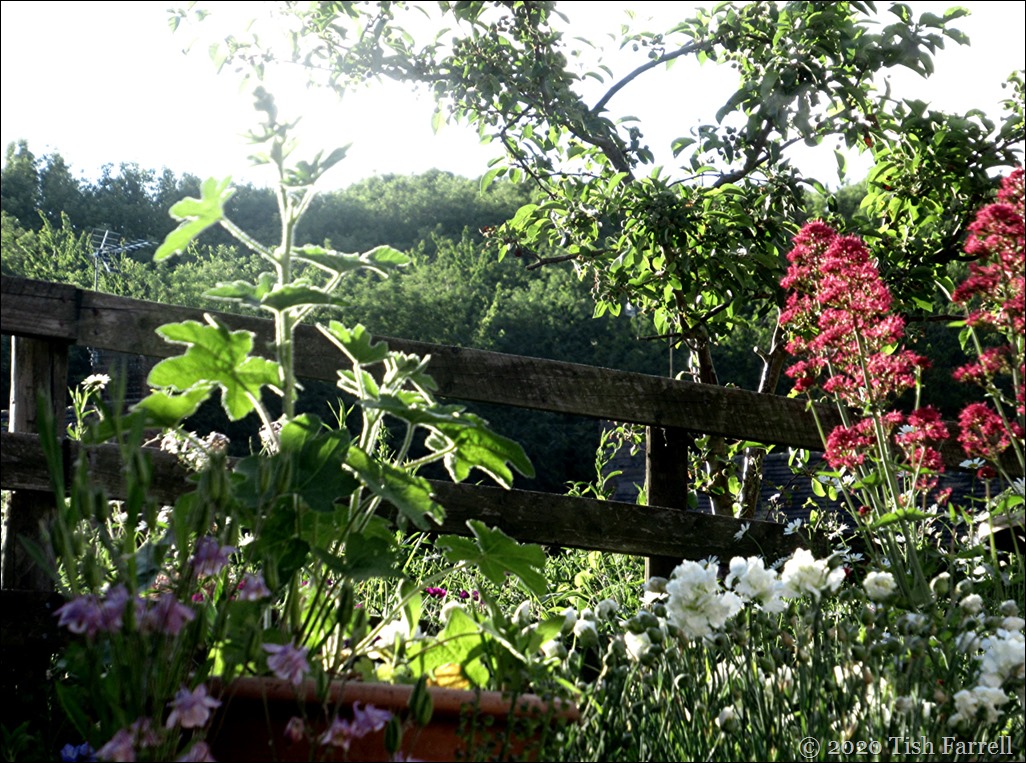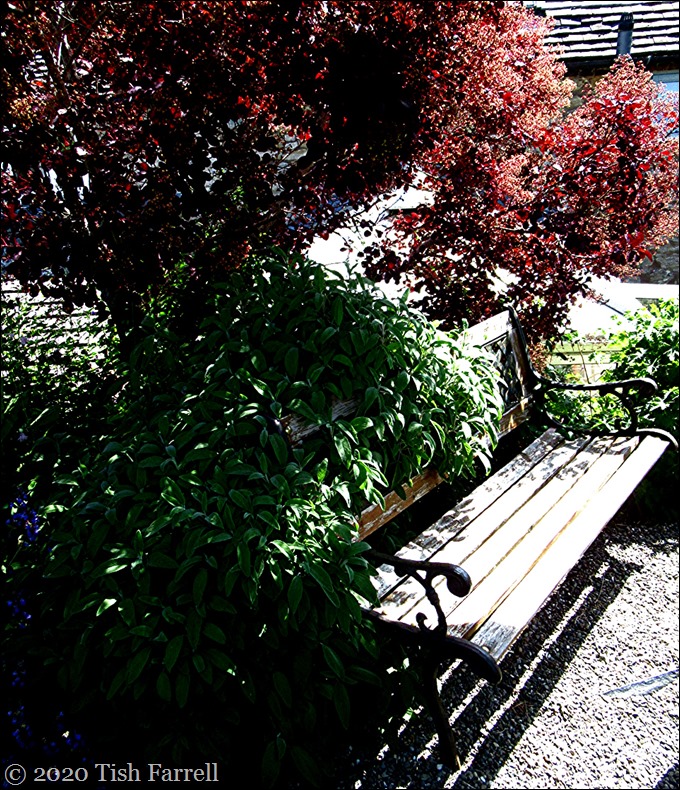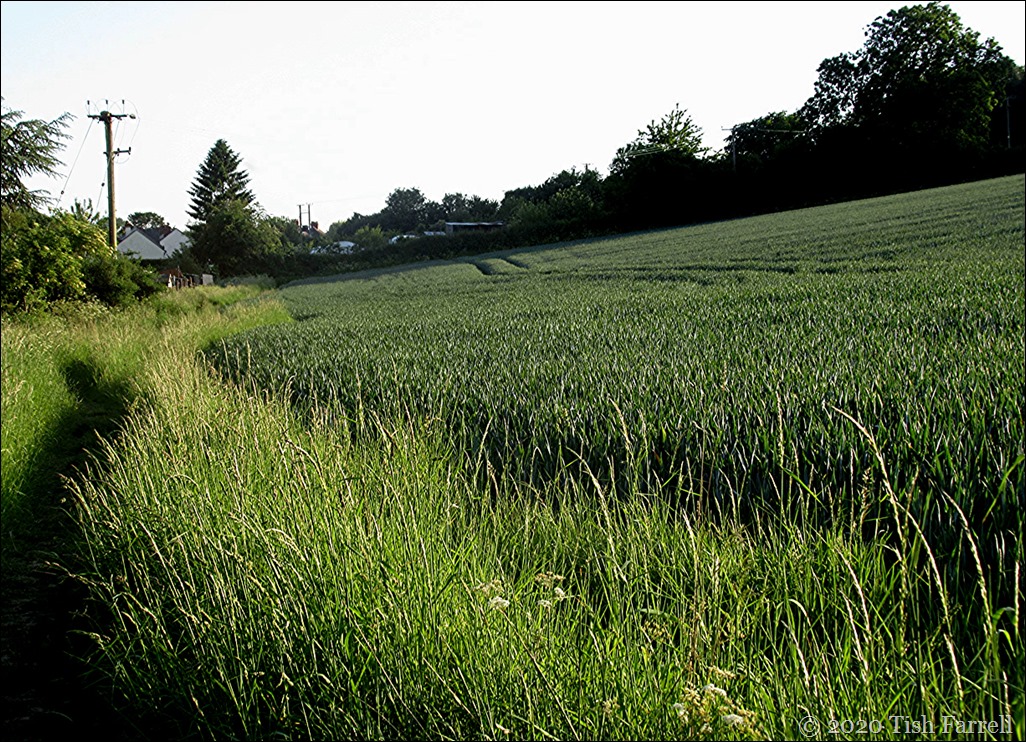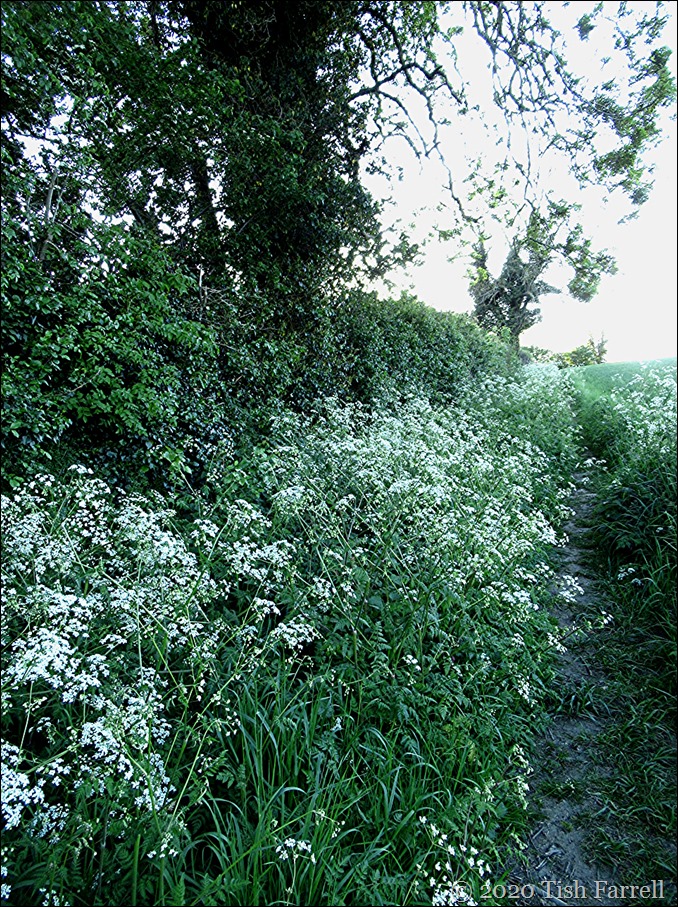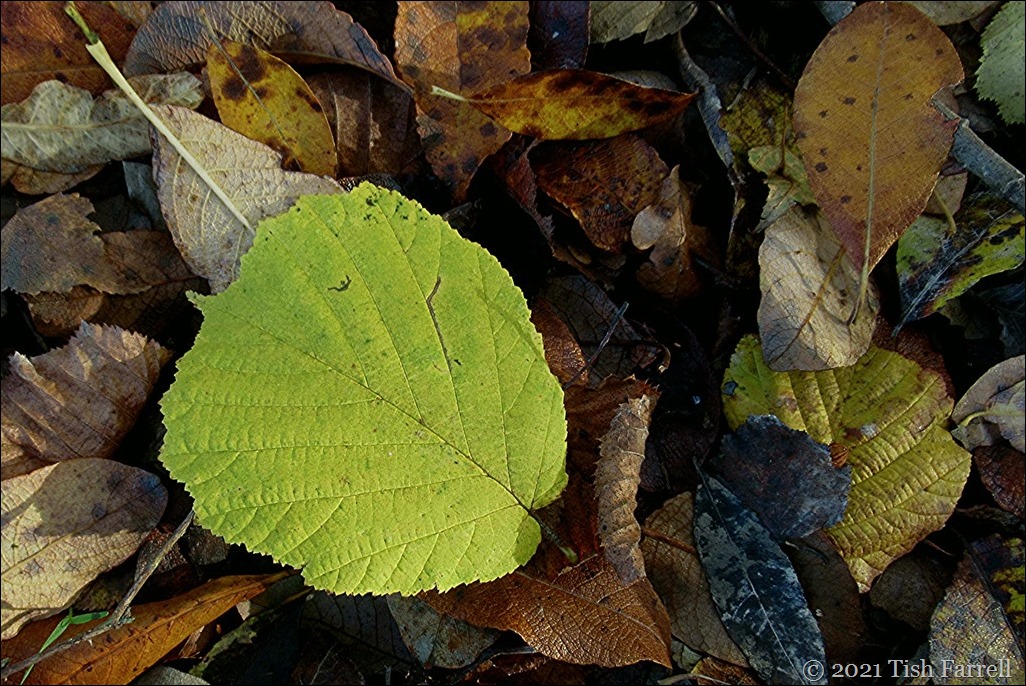
Well, we’ve had lots of gloom in Much Wenlock, a morning of fog, twenty four hours of frigid gales, a night-time sprinkling of snow, woken up to some light frosts, and enjoyed a few days of bright sun and clear skies. We’ve also had huge quantities of leaf fall this year, which is always bound to gladden this gardener’s heart. Anyway, I’ll feature the best bits – November high spots in the garden and out and about on the Linden Field and Windmill Hill.
First, though, some orientation. I know several of you love the Linden Walk, but you may not have a gist of the overall lay of the land. For some reason I’ve not thought to provide it before now. So: in the next photo I’m standing inside the lime tree avenue, intent on capturing the Linden Field to the left, and therefore the position of the old windmill on the hill just above it (and barely visible far left centre because (drat and double-drat) the sun was shining on it). The field was used for the Much Wenlock Olympian Games (started by Dr. William Penny Brookes in the 1850s and still going today) and the hillside below the windmill once provided a natural auditorium for the games’ attendees.
In the foreground is the cricket club pitch (orange fencing) and beyond it the hedged and tree shaded corner of the town’s bowling green.
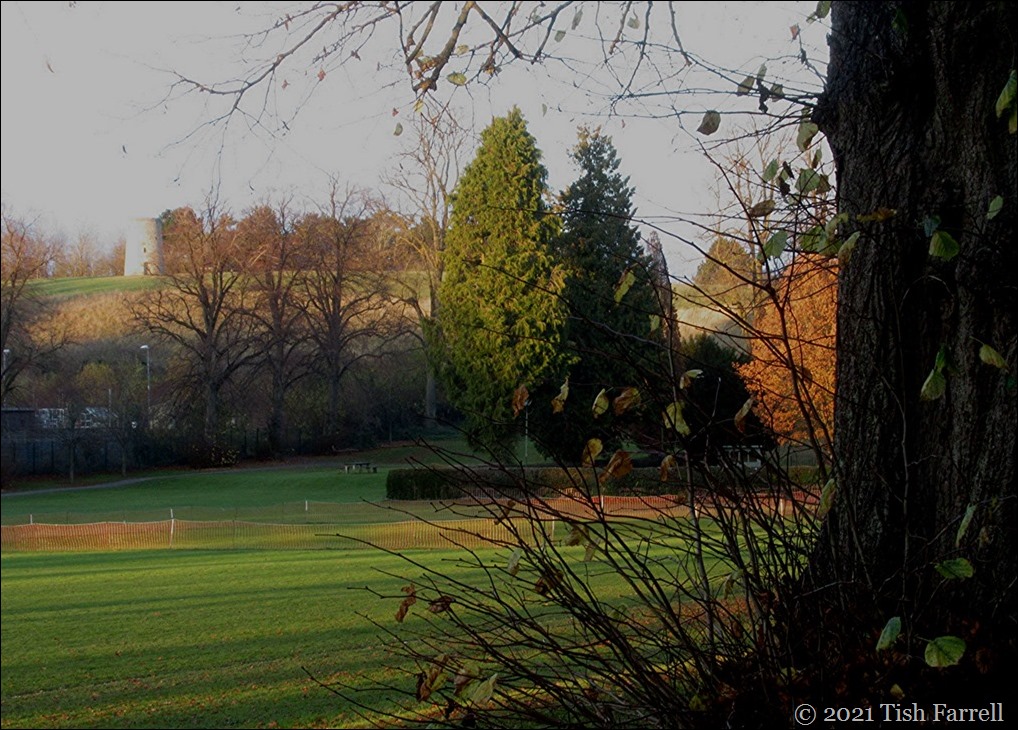
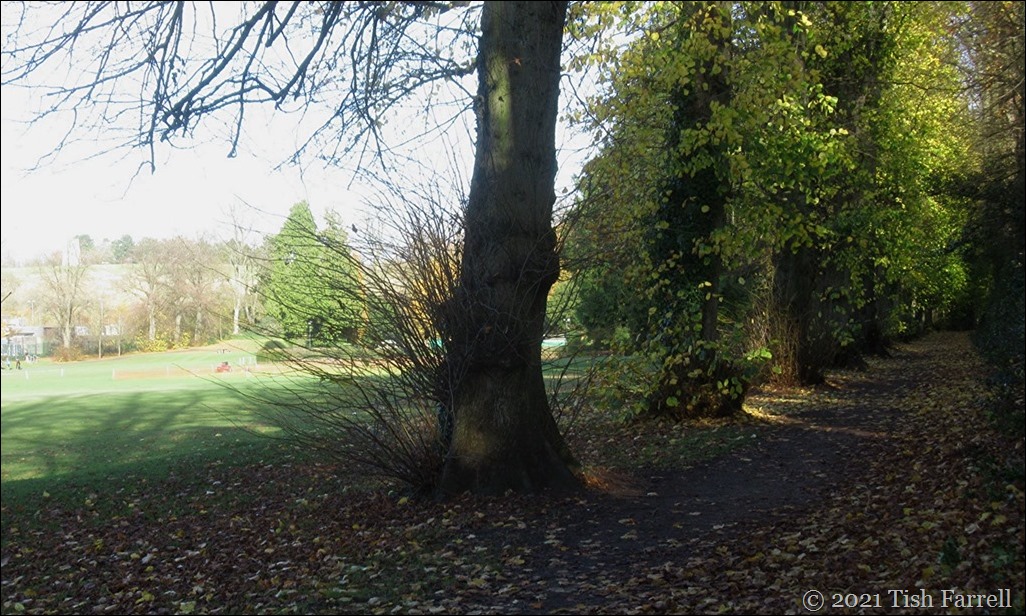
*
Now the old railway line, which often gets a mention here, runs along the right side of the Linden Walk (i.e. looking at photo above). These days all that is left is a deep and tulgey cutting. Dr. Brookes lobbied for the building of the railway to Much Wenlock, and every year a special Olympian Games train was put on to bring thousands of visitors to the field. In the next photo, and turning back on ourselves, you can see the entrance gate. The station stood to the left of the gate, and is now a private house.
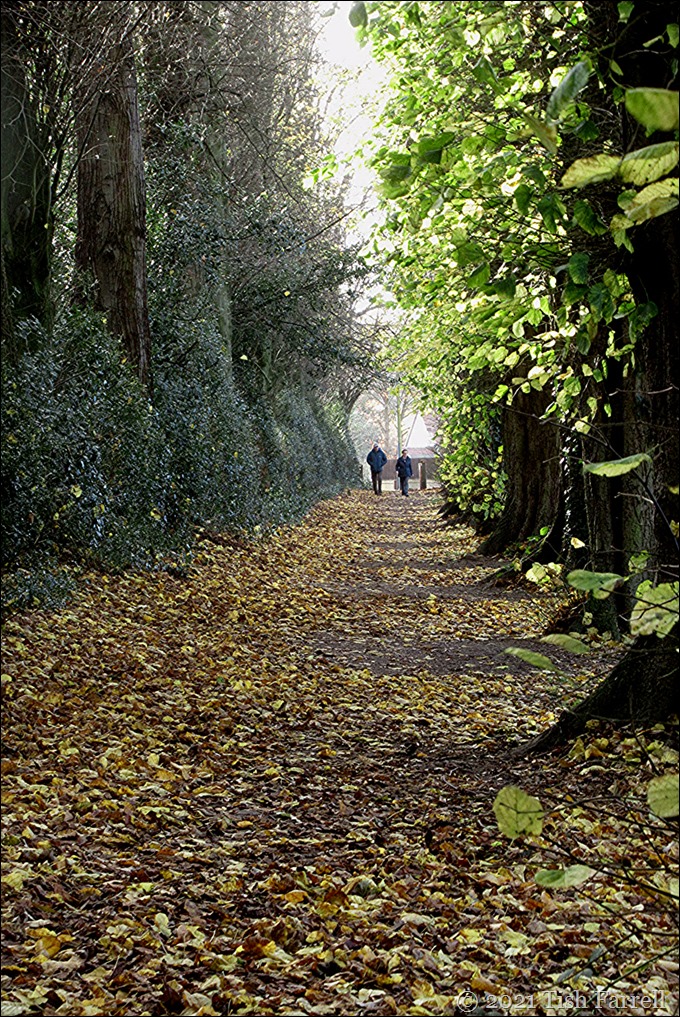
*
About face once more, and then head up the Linden Walk until your reach the field boundary. Here, running along the base of Windmill Hill is a single avenue of specimen oaks and conifers, all planted over the last 150 years or so to commemorate various Olympian Games events. At this point you can carry straight on and join the old railway path, or turn left for the windmill.

*
It’s a bit of a climb, but this ancient limestone meadow is always interesting, no matter the season. Just now the grasses are golden, punctuated with dark stems of knapweed seed heads.
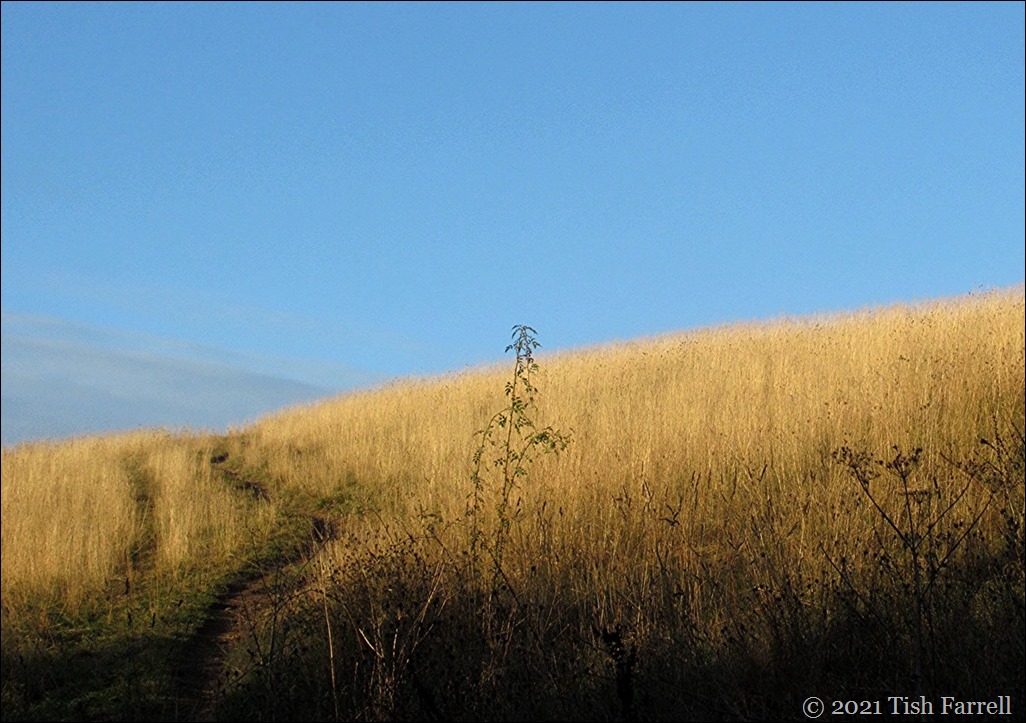
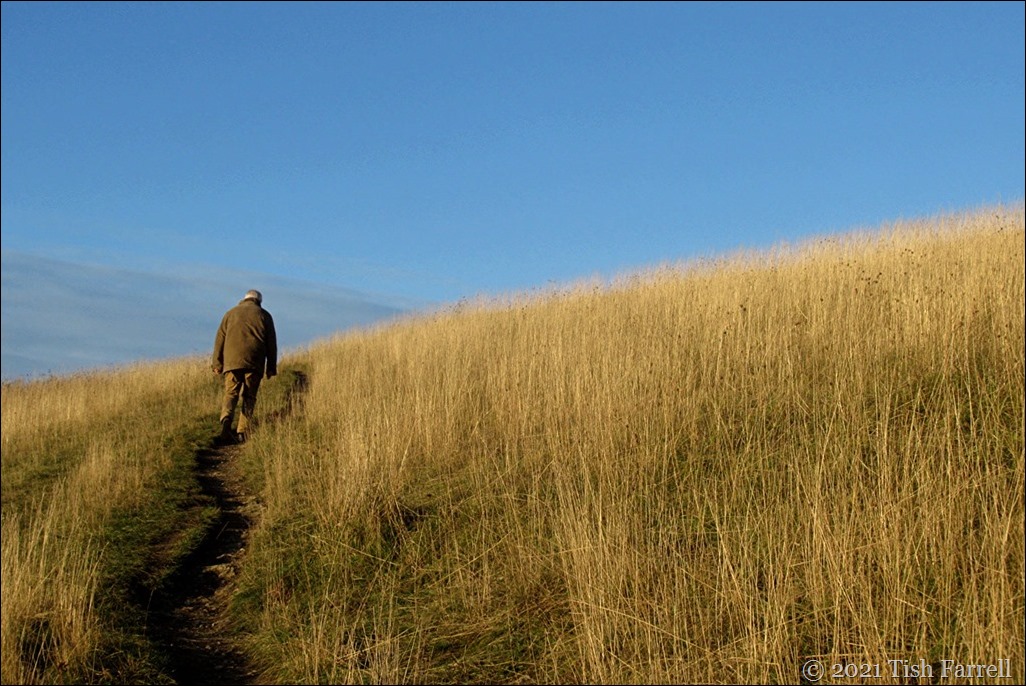
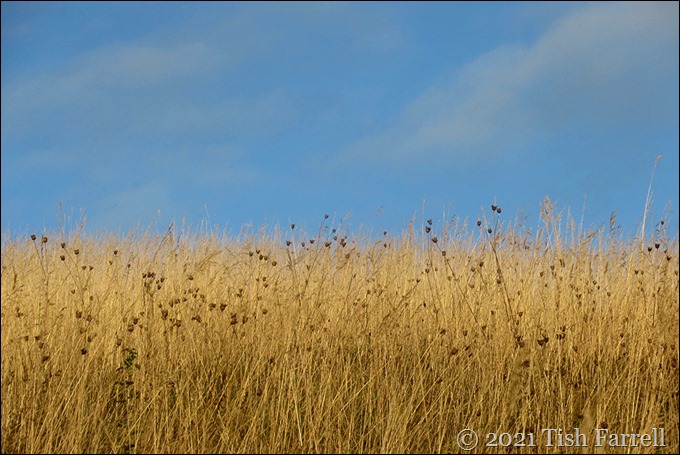
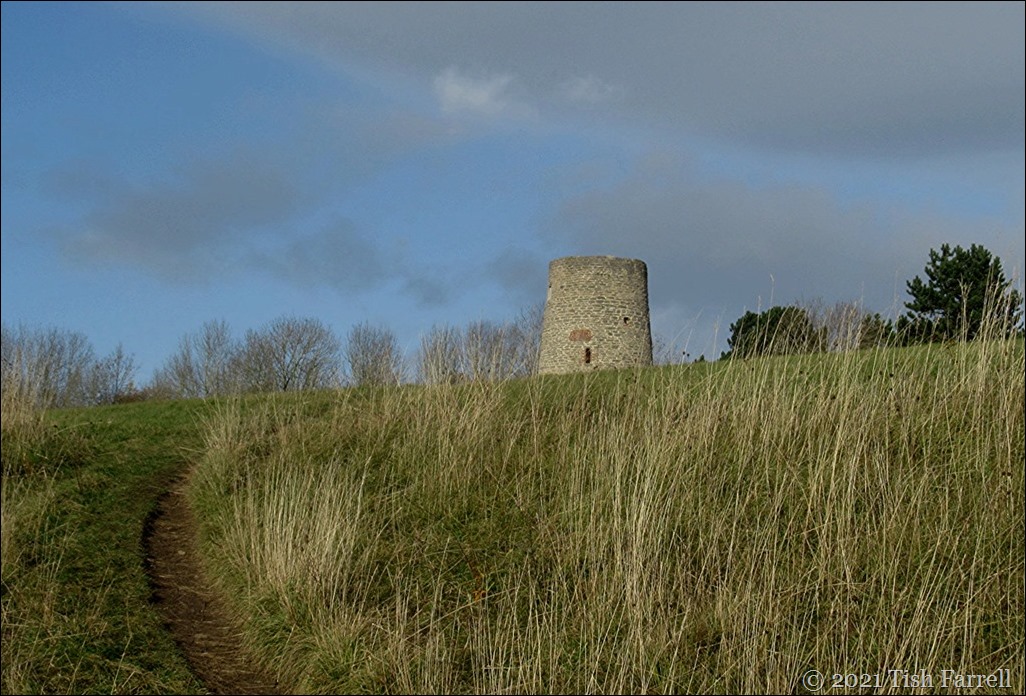


It’s a favourite spot with dog walkers, and naturally there are some fine views in several quarters:

*
Behind the windmill is Shadwell Quarry, long disused and earmarked for development. A somewhat treacherous path runs around the quarry’s perimeter fence, but I like it because, if need be, you can always grab hold of the chain-link fencing, and there are also some handy posts to serve as camera tripods. You get quite a different, almost ethereal view of the windmill from here.

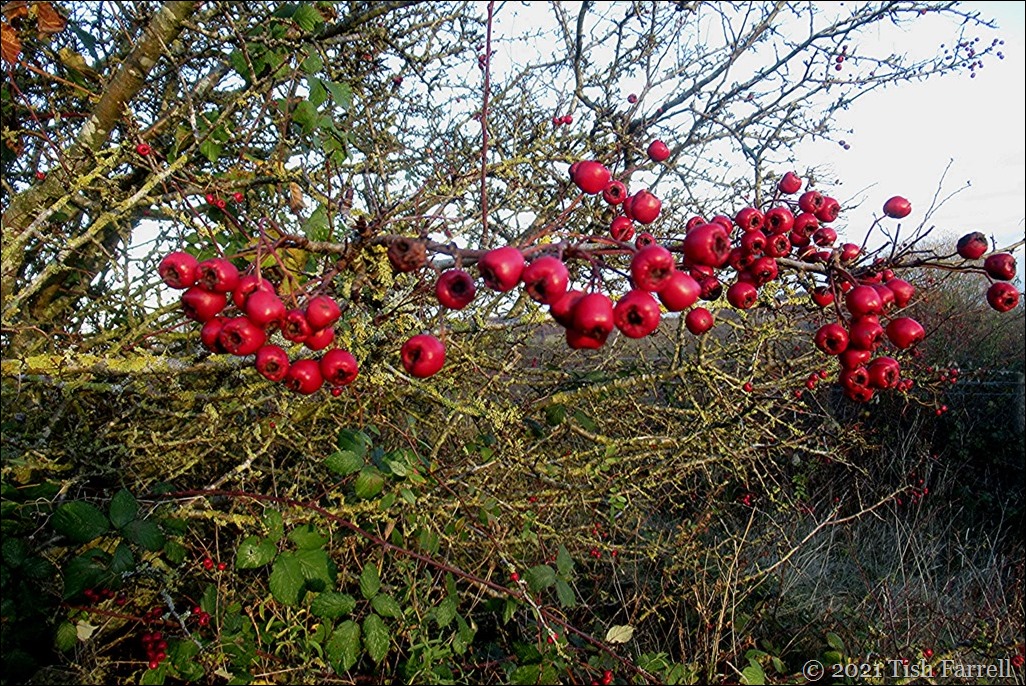
The wood below windmill hill is another favourite spot. There’s an unexpected copse of beech trees on the hill slope, terrain that, long ago, looks to have been dug into for railway track-bed ballast. Now there’s a mysterious quietness about this spot, and at the moment a stunning beach leaf carpet all around.

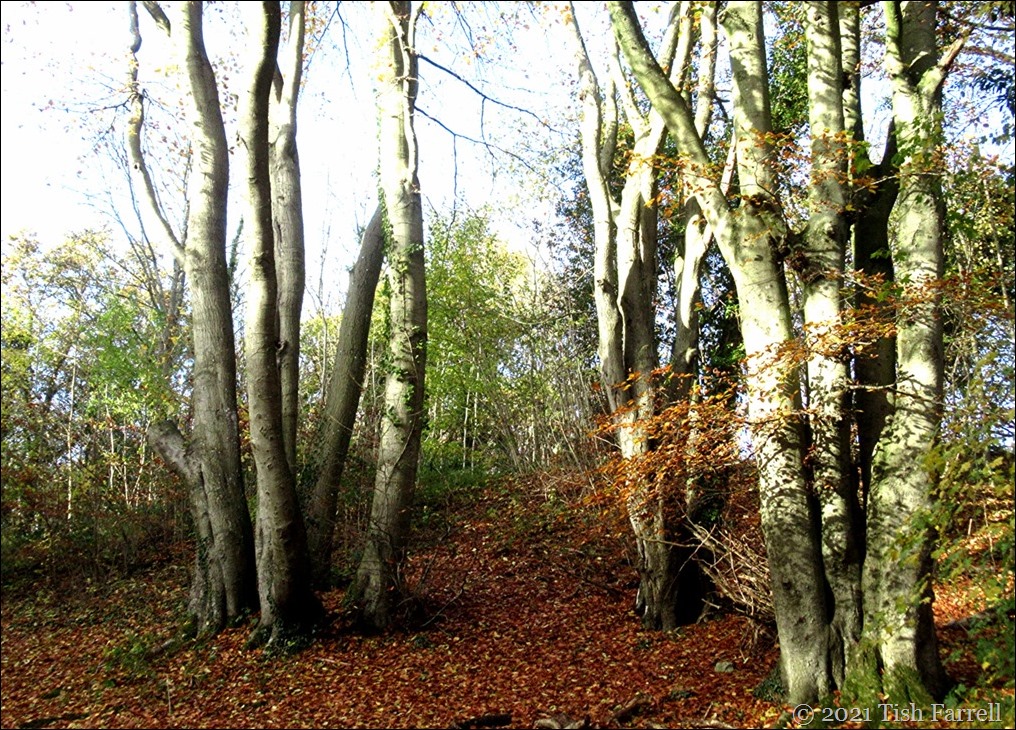
*
On the home front the garden is descending into vegetable chaos, but the shrubby convolvulus and geraniums Rozanne and Ann Thomson having been flowering boldly, and the crab apple tree on the garden fence is putting on its usual autumn show, pigeons allowing. At the allotment too, the pot marigolds and nasturtiums have flowered and flowered until the recent frost. Up there it’s been a time for tidying away bean vines and sweet corn stalks, making compost heaps and gathering fallen leaves to make leaf mould. With the arrival of frosts I’ve tucked up the polytunnel salad stuff in horticultural fleece, and in the outside beds begun to harvest the parsnips which are all the better for a good chilling. The recent gales have blown over the sprouting broccoli, but it seems to be continuing to sprout on the horizontal, which is making it much easier to harvest. Once I again I omitted to stake the plants securely. Ah well. Next year.
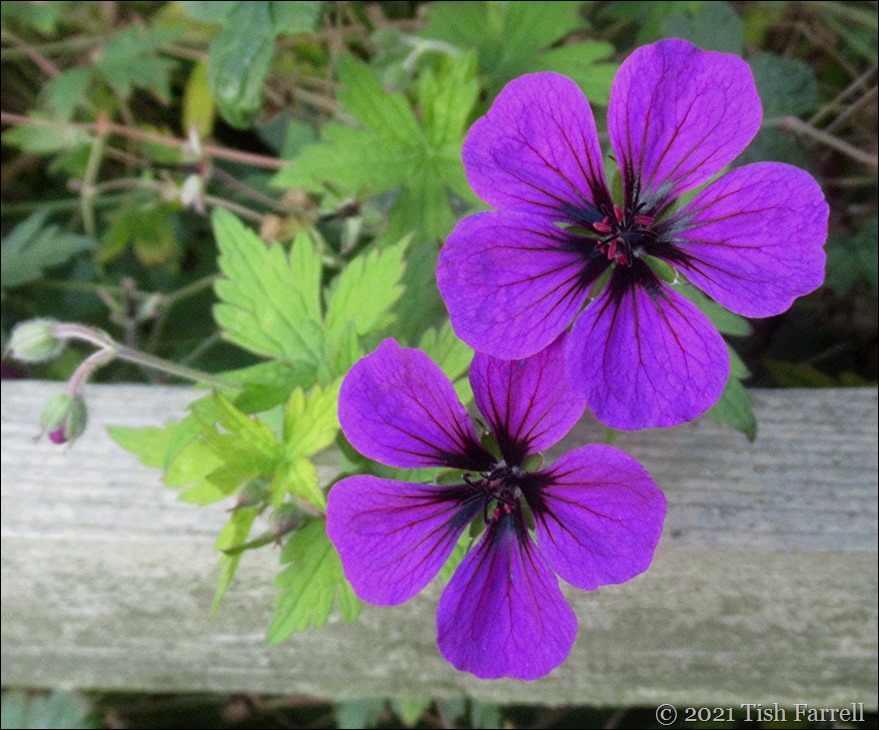


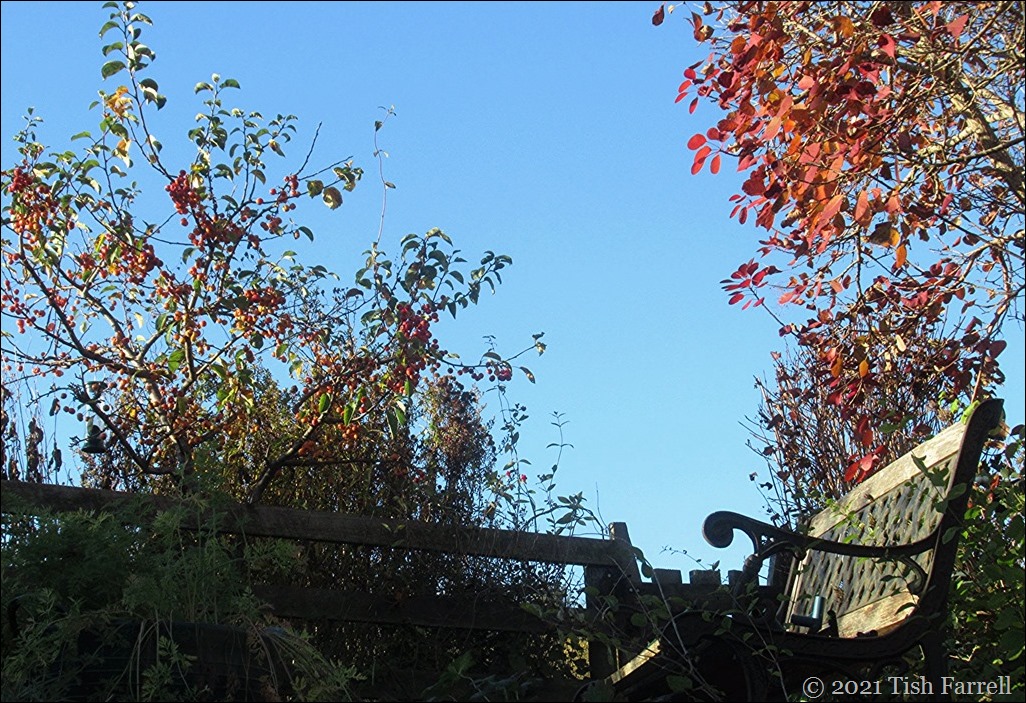

*
And finally a little jug of sunshine: allotment nasturtiums and pot marigolds all self-sown, but going strong through most of November:
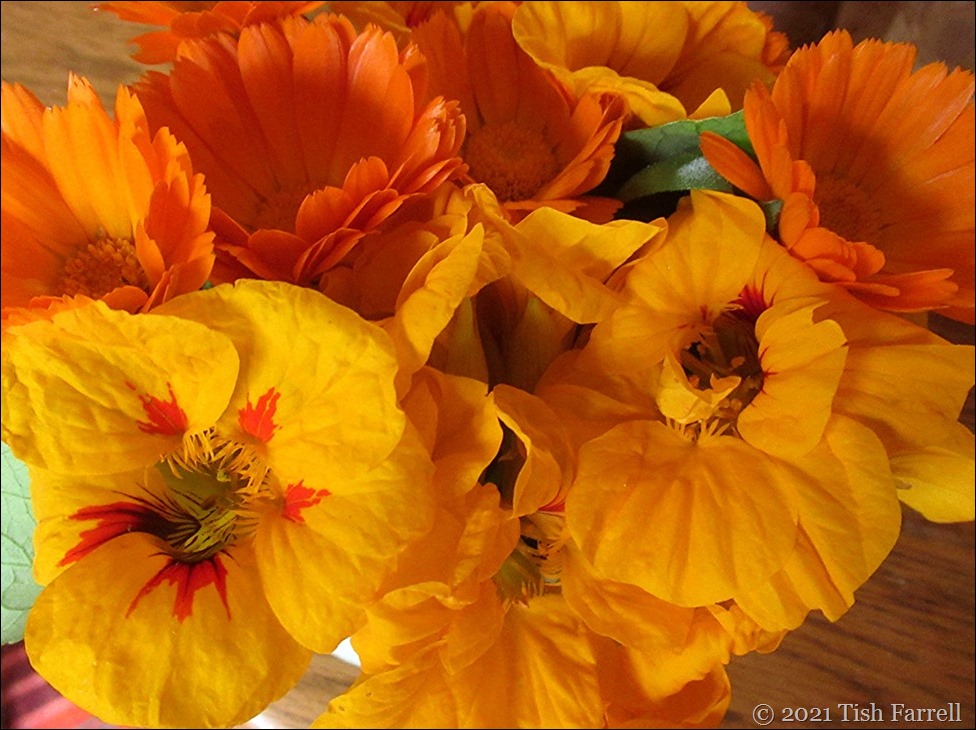
The Changing Seasons: November Hosted by Brian at Bushboys World and Ju-Lyn at Touring My Backyard.

